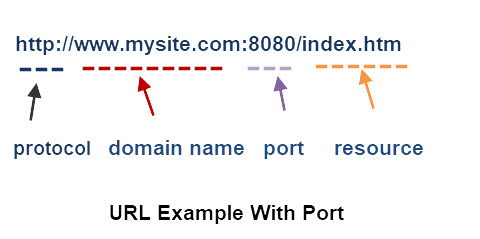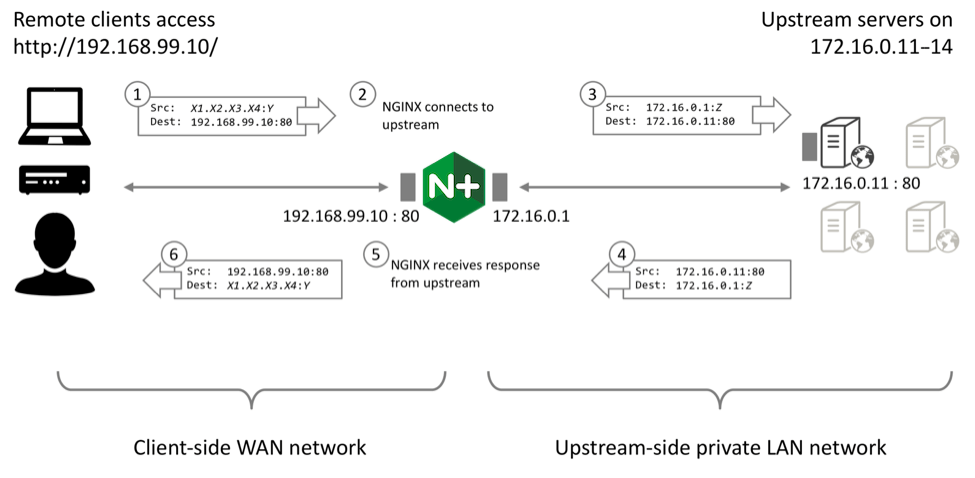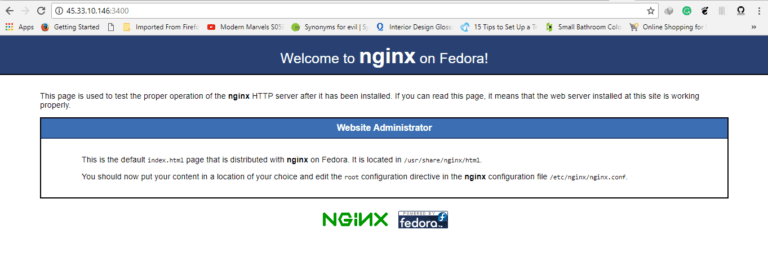
only a GET request to to get latest versions This option does not cause any auto updates, nor send any information
Nginx direct url to port update#
in some UI views to notify that grafana or plugin update exists for new versions (grafana itself and plugins), check is used Change this option to false to disable reporting. running instances, dashboard and error counts. No ip addresses are being tracked, only simple counters to track Server reporting, sends usage counters to every 24 hours. If enabled and user is not anonymous, data proxy will add X-Grafana-User header with username into the request, default is false. How long the data proxy should wait before timing out default is 30 (seconds) This enables data proxy logging, default is false ssl may be ‘true’, ‘false’, or ‘insecure’. database: will use Grafana primary database. Either “redis”, “memcached” or “database” default is “database” cache mode setting used for connecting to the database For “sqlite3” only, path relative to data_path setting For “mysql”, use either “true”, “false”, or “skip-verify”. For “postgres”, use either “disable”, “require” or “verify-full” Set to true to log the sql calls and execution times. Connection Max Lifetime default is 14400 (means 14400 seconds or 4 hours) Max conn setting default is 0 (mean not set) Use either URL or the previous fields to configure the database
Nginx direct url to port password#
If the password contains # or you have to wrap it with triple quotes. Either “mysql”, “postgres” or “sqlite3”, it’s your choice as separate properties or as on string using the url property. You can configure the database connection by specifying type, host, name, user and password


By default it is set to false for compatibility reasons. Serve Grafana from subpath specified in root_url setting. Redirect to correct domain if host header does not match domain The public facing domain name used to access grafana from a browser The ip address to bind to, empty will bind to all interfaces folder that contains provisioning config files that grafana will apply on startup and while running. Directory where grafana will automatically scan and look for plugins Temporary files in data directory older than given duration will be removed Path to where grafana can store temp files, sessions, and the sqlite3 db (if that is used) instance name, defaults to HOSTNAME environment variable value or hostname if HOSTNAME var is empty possible values : production, development Do not modify this file in grafana installs I would like to stop the formatting, but I can’t. Why is it not possible to attach a text file? # complete custom.ini, but just the domain is changed.to 7.0.3 default.ini Using the grafana server’s NAT-IP, I get status 401. The grafana server is working fine locally. Please see below.Īdditionally it is probably very important to mention, that I have to access the grafana server via a NAT IP. I removed the hostname, just took ‘localhost’. So, this time I just changed the domain in the grafana default config to well known,official, real URL (let’s take again ) according to. Yes, I forgot to change the domain to a “real URL”, sorry for that. May be my poor English, the URL and myhostname.domain were a little bit confusing, but it s nothing else like, etc. INFO Successful Login logger=rver Request Completed logger=context userId=0 orgId=0 uname= method=PUT path=/api/user/password status=401 remote_addr=10.10.10.10 time_ms=0 size=26 referer= This text will be blurred Host = myhostname.domain:3306 Grafana Log … see diff output diff defaults.ini custom.ini Ssl_certificate_key /etc/nginx/ssl/nginx.key

Ssl_certificate /etc/nginx/ssl/nginx.pem The web page always returns to the login page with message “Unauthorized” after changing the password at first login.Īny idea or even a solution for me would be great. I tried several nf configs, but it does not work.Ĭontent of simple nf (which I found in forums many times): IP and have to “forward” the default port 3000 via nginx. Now in my production environment I have to access the server via a NAT Root_url = %(protocol)s://%(domain)s:%(http_port)s/grafana/ My grafana default configuration changes just are: Successful :-), working in a local environment without NAT IPs and The 7.0.3 installation, configuration and creation of first panels were


 0 kommentar(er)
0 kommentar(er)
